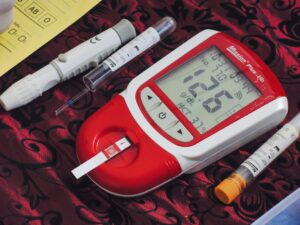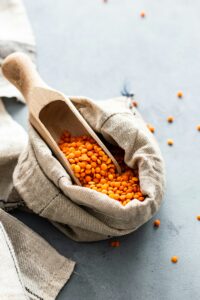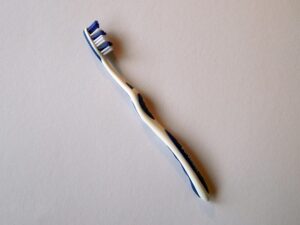
Published: 1 January 2024
The primary purpose of the blood in our body is to transport oxygen to the tissues and transport carbon dioxide back to the lungs. Without the right amount, we can encounter various health conditions, or possibly die. Let’s discuss some potential causes of hemoglobin deficiency, why people may want to raise their levels, dietary considerations and timeframes in which one can expect to make progress increasing their hemoglobin.
Reasons Why Hemoglobin Is Low
Normal hemoglobin levels average about 15 grams per deciliter (g/dL), with women being lower and men averaging higher.
When levels are significantly lower than average, this signifies an anemic state and is often caused by either a lower quantity of red blood cells or red cells which lack an adequate concentration of hemoglobin.
Causes of anemia could be traumatic hemorrhage, menstrual cycles, pregnancy, internal bleeding like with ulcers, cancer and nutrient deficiencies to name a few.
Why Raise Hemoglobin Levels
The most important reason one may want to raise their hemoglobin levels is to stay alive. Without enough hemoglobin in the blood, there will be a shortage of oxygen available for transport to the tissues. This can cause major organ damage and possibly death. Healthy hemoglobin levels also have an impact on general health and well-being. With low hemoglobin levels, people can suffer from fatigue, lethargy, shortness of breath and other day to day health difficulties.
Another reason people may want to raise their hemoglobin levels is to increase performance. Elite athletes push their bodies to the max and require extreme levels of muscular and cardiovascular output. In order to achieve these high levels of performance, oxygen is required in massive quantities, therefore the blood must be packed with hemoglobin. This is why the illegal practice of blood doping has been sought out by these athletes.
Furthermore, many other people make a deliberate effort to increase their hemoglobin in order to donate blood, specifically plasma. Historically, the minimum hemoglobin level required to donate plasma has been 12.5 g/dL or above. If a donor has less than this, it results in a deferral period of at least 24 hours where they are not allowed to donate. The reason for this is to avoid the donor encountering an anemic crisis once additional blood has left the body. This is problematic for the blood supply, as well as for the donors, particularly the ones that rely on donating for the financial benefits.
Diet
The suggested amount of iron will vary by age, gender and other factors. For 19–50-year-old males, the Recommended Dietary Allowance is 8 mg per day. For 19–50-year-old females, 18 mg is recommended. 27 mg daily is suggested for pregnant women1.
Heme vs. Non-Heme
Dietary iron has two primary forms, heme and non-heme.
Heme iron is primarily animal-derived from meat. Whereas non-heme iron is mostly plant derived from vegetables, beans, nuts and grains. Heme iron has a higher bioavailability and is absorbed much easier than non-heme iron. According to the Red Cross, the iron absorbed from heme sources is about 30%, whereas 2-10% is absorbed from non-heme sources2. For this reason, vegan and vegetarians need to intake more iron containing food than meat eaters, to compensate for their lower absorption rates.
Heme Iron Sources

The highest sources of heme iron are organ meats, shell fish and red meat. The concentrations of iron go down from there. For a 3 oz serving, chicken liver has 10.2 mg, beef liver has 5.56 mg, beef steak has 2 mg, cooked mussels have 5.71 mg and dark chicken meat has 1.16 mg of iron3.

Non-Heme Sources
For a 1 cooked cup serving, lentils have 6.59 mg, spinach is 6.43 mg, red kidney beans have 5.2 mg, edamame have 3.52 mg, rice has 2.8 mg, oats have 2.11 mg and soy milk has 2 mg of iron4. Breakfast cereal has up to 8 mg per cup.

Iron Absorption Enhancement
Certain substances are known to have an “enhancement” effect on iron absorption.
MFP Factor
MFP Factor is a peptide present in meat, fish, and poultry. It enhances the absorption of non-heme iron which is present in the same meal. One study demonstrated that the addition of chicken, beef, or fish in a meal increased nonheme iron absorption by 2 to 3-fold5.
Vitamin C (Ascorbic Acid)
Vitamin C has also been show to increase the absorption of iron from foods. You can get this from vitamin C rich foods like oranges, lemons and limes and/or by using supplements.
Iron Supplementation
Approximately 14% to 18% of Americans take a supplement containing iron6. For those that struggle to achieve their daily goals from dieting alone, supplementation might make sense. FADY
Multivitamins with iron, especially those designed for women, typically provide 18 mg of iron. Iron-only supplements usually deliver close to 65 mg of iron (over 3 times the daily value).
When shopping over the counter, you will see that there are many several forms of iron available like Ferrous Gluconate, Ferrous Fumarate, Ferrous Sulfate. Additionally, different routes like tablet, syrup, controlled release tablet and sustained release capsule are also offered. So, which one should you choose? Fortunately, there have been studies comparing the efficiency of each type. One study found that Ferrous Sulfate tablets had the best rate of absorption when compared to six other common forms7.
The potency of these iron pills have the potential to raise your hemoglobin levels much faster than with just food sources alone, making it easy to go overboard. Acute toxicity from excessive amounts can cause GI side effects like vomiting, constipation, diarrhea and nausea, as well as major organ damage. Consulting with a medical provider is advised to help best manage a regimen.
Expected Progress
How quickly one can expect to see an increase in their hemoglobin, depends on several factors. But in general, once an iron supplementation regimen begins, increased red blood cell production should take place within 3-7 days with increased hemoglobin levels realized in about 2-4 weeks8.

250 mg of absorbed iron should produce 250 cc of red blood cells (RBC), the same amount as one unit of packed RBCs, each of which raises hemoglobin in the blood stream by around 1 g/dL. Given these numbers, and understanding the fact that about 10% of ingested iron is actually absorbed, a cycle of 2,500 mg of iron should be ingested over a period of one or more months, in order to increase hemoglobin levels by 1 g/dL. This may be more or less depending on the severity of anemia involved. A medical provider should be involved in this decision making to ensure safety.
Conclusion
For those suffering from anemia, the lack of hemoglobin can stem from several causes and can inflict both acute and chronic effects on the body. Dietary adjustments and iron pill supplementation will remain instrumental in getting levels back to baseline, while consulting with a qualified medical provider will ensure a sound plan of action.
References
1. Iron . (n.d.). Retrieved from National Institutes of Health: https://ods.od.nih.gov/factsheets/Iron-HealthProfessional/
2. Iron Rich Foods. (n.d.). Retrieved from Red Cross: https://www.redcrossblood.org/donate-blood/blood-donation-process/before-during-after/iron-blood-donation/iron-rich-foods.html
3,4. Jillian Kubala, R. (2023, April 3). 11 Foods High In Iron. Retrieved from Health: https://www.health.com/foods-high-in-iron-7255472
5,6. Moustarah, F., & Daley., S. F. (2022, October 22). Dietary Iron. Retrieved from National Library of Medicine: https://www.ncbi.nlm.nih.gov/books/NBK540969/
7. Mohammed Gulrez Zariwala, S. S. (2013, June 21). Comparison Study of Oral Iron Preparations Using a Human Intestinal Model. Retrieved from National Library of Medicine: https://www.ncbi.nlm.nih.gov/pmc/articles/PMC3867244/











